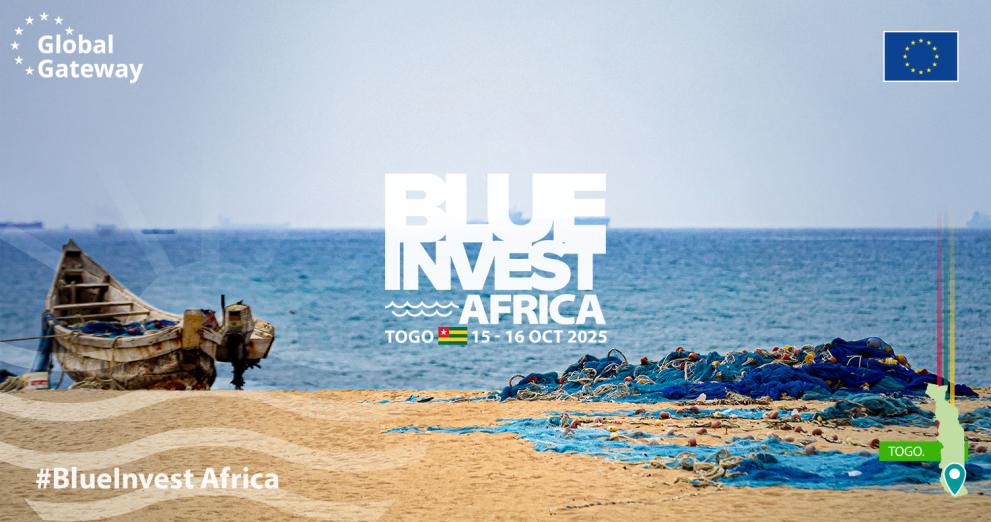Lomé forum converts ESG goals into investable assets
BlueInvest Africa links SMEs and capital as Lomé scales the blue economy; EMB and AFK track frontier appetite while CL=F shapes current-account risk; delivery on a €200m pipeline and TEU gains will determine durable spread compression.

Togo’s BlueInvest Africa forum in Lomé on 15–16 October 2025 signaled a coordinated effort to convert maritime advantages into investable, sustainability-linked assets across fisheries, logistics, coastal infrastructure, and renewable ocean energy. The forum’s purpose extended beyond networking: authorities used it to channel a defined project pipeline into blended-finance structures and align eligibility with ESG mandates that govern a growing share of institutional capital.
The policy signal is clear—embed sustainability criteria within industrial financing to compress risk premia, lengthen funding tenors, and scale projects without destabilizing external balances.
The blue economy contributes an estimated 6% of GDP, anchored by the Port of Lomé, West Africa’s only deep-water terminal capable of handling 16-metre drafts. Throughput reached roughly 2.0 million TEUs in 2024, up 5.2% year on year, as modernization and cargo redirection lifted productivity. Transport and logistics now account for about 13% of GDP, and formal employment linked to port ecosystems exceeds 55,000 jobs when warehousing, cold-chain, and maritime services are included.
The binding constraint remains financial architecture: SME access to credit is limited, loan maturities average under three years, and borrowing costs exceed 8%, creating a maturity mismatch that impedes capital-intensive coastal assets and leaves many firms reliant on donor or quasi-sovereign funding.
The forum’s mechanism targets that mismatch. Authorities are structuring a €200 million investment pipeline for 2025–2028—around 1.6% of GDP—combining concessional tranches with private co-investment and green bonds priced in line with WAEMU five-year yields of roughly 7.7–9.3% across the curve. By migrating projects onto standardized European climate-finance frameworks, Lomé can lower the cost of capital, extend duration, and allocate refinancing risk to deeper balance sheets.
The macro transmission is investment-led: capital imports rise near term, but logistics productivity and export capacity improve the current account’s non-price component over time. Cleaner port operations and renewable energy in aquaculture reduce diesel reliance, limiting FX pass-through when global oil prices (CL=F) rise.
Macro fundamentals support the pivot. Real GDP growth is projected at about 5.1% in 2025, from 4.9% in 2024, as trade normalizes and infrastructure expands. Inflation remains subdued, near –0.5% year on year in September 2025, within WAEMU convergence criteria and supportive of monetary stability under BCEAO oversight.
Public debt stands around 68% of GDP, below the union’s 70% ceiling, while external debt service is manageable at roughly 13% of export earnings. These anchors have narrowed the sovereign risk premium versus 2024 highs, broadly tracking tightening across selected frontier names as fiscal execution improved. Sustained compression will require credible delivery rather than announcements.
Security and insurance dynamics add leverage. Lower incident rates in the Gulf of Guinea have eased marine insurance premia and improved schedule reliability, enhancing Lomé’s competitiveness against Tema and Abidjan. That stability has revived foreign direct investment, which reached about USD 450 million in 2024, roughly 40% above pre-pandemic averages.
Digital integration—traceability for fisheries exports, e-payments for landing sites, and micro-insurance for coastal SMEs—reduces working-capital frictions, improves data for underwriting, and strengthens bankability, extending fintech’s gains into ocean-linked value chains.
Markets are cautiously receptive. Emerging-market credit risk as proxied by EMB has tightened modestly in 2025; Africa-wide equity exposure via AFK reflects improved sentiment without a decisive re-rating. Regionally, green or sustainability-linked issuance clearing at a narrow premium to WAEMU benchmarks would validate institutional demand and deepen the buyer base beyond banks and treasuries. Execution discipline remains the test: feasibility, procurement integrity, and timely disbursement must translate commitments into cash-flowing assets.
The forward test is measurable and time-anchored. By June 2026, confirm traction if signed blue-economy commitments exceed €150 million, at least 25% of pledges are disbursed, port throughput trends above 2.5–2.6 million TEUs, ocean-linked SME credit expands by 20% year on year, and the sovereign spread sustains below 800 basis points.
Missing these thresholds would imply execution risk, persistent long-tenor funding gaps, and sensitivity to oil-price shocks; meeting them would establish a replicable WAEMU template that embeds sustainability inside industrial policy and anchors a durable improvement in Togo’s external and fiscal resilience.





